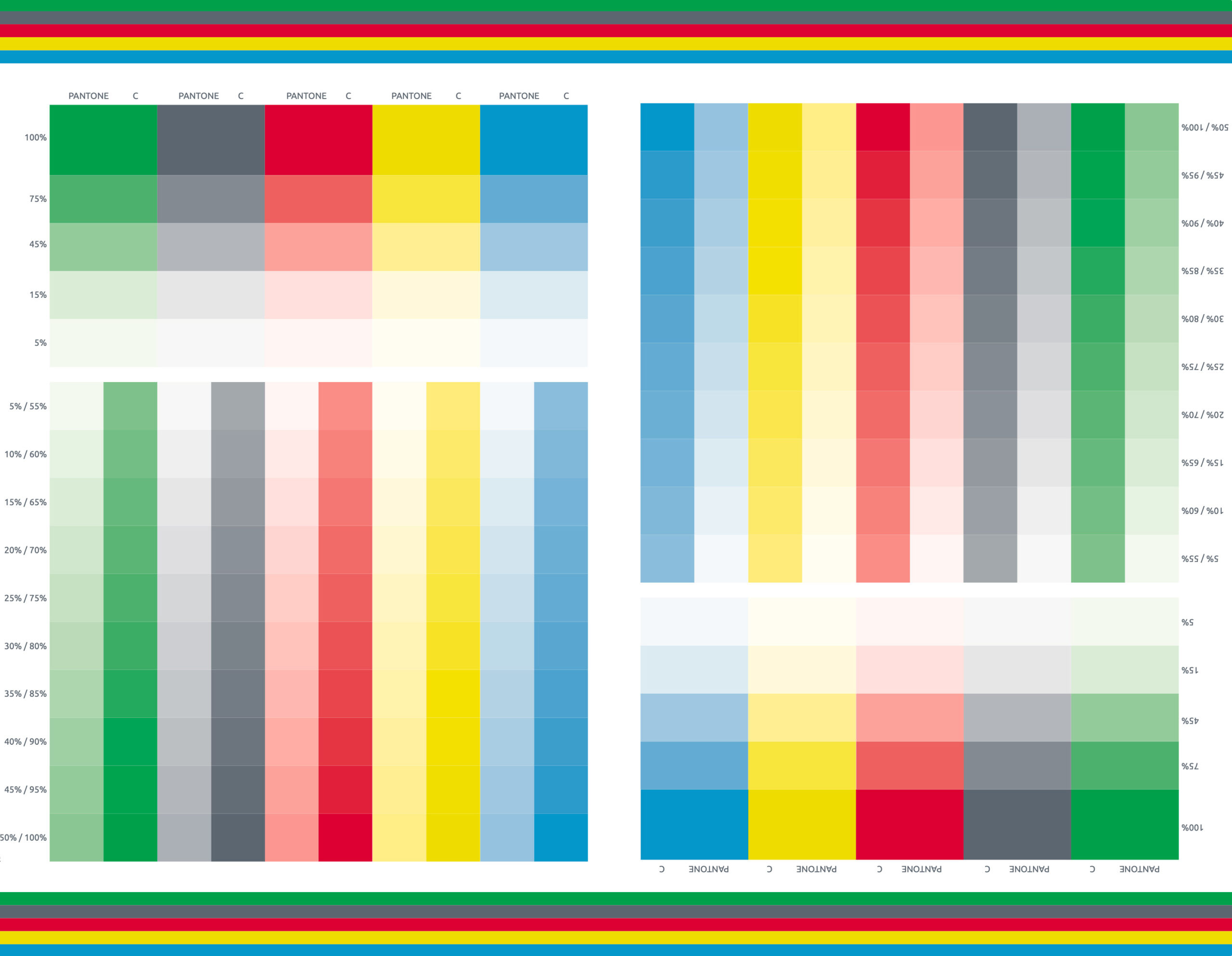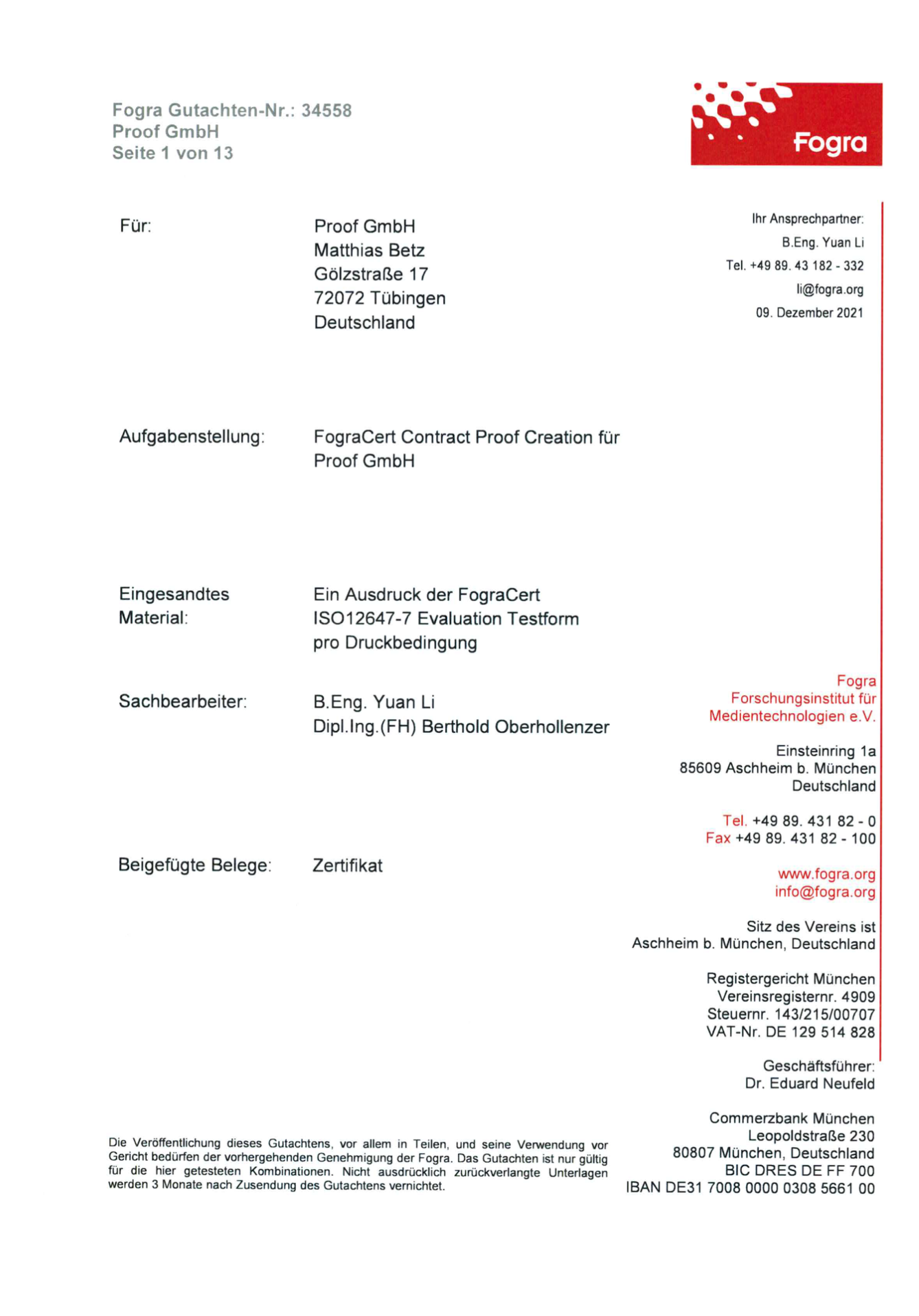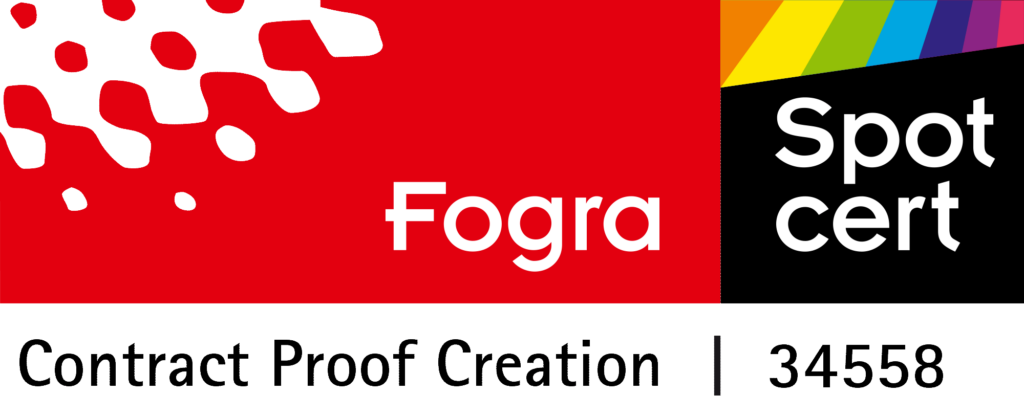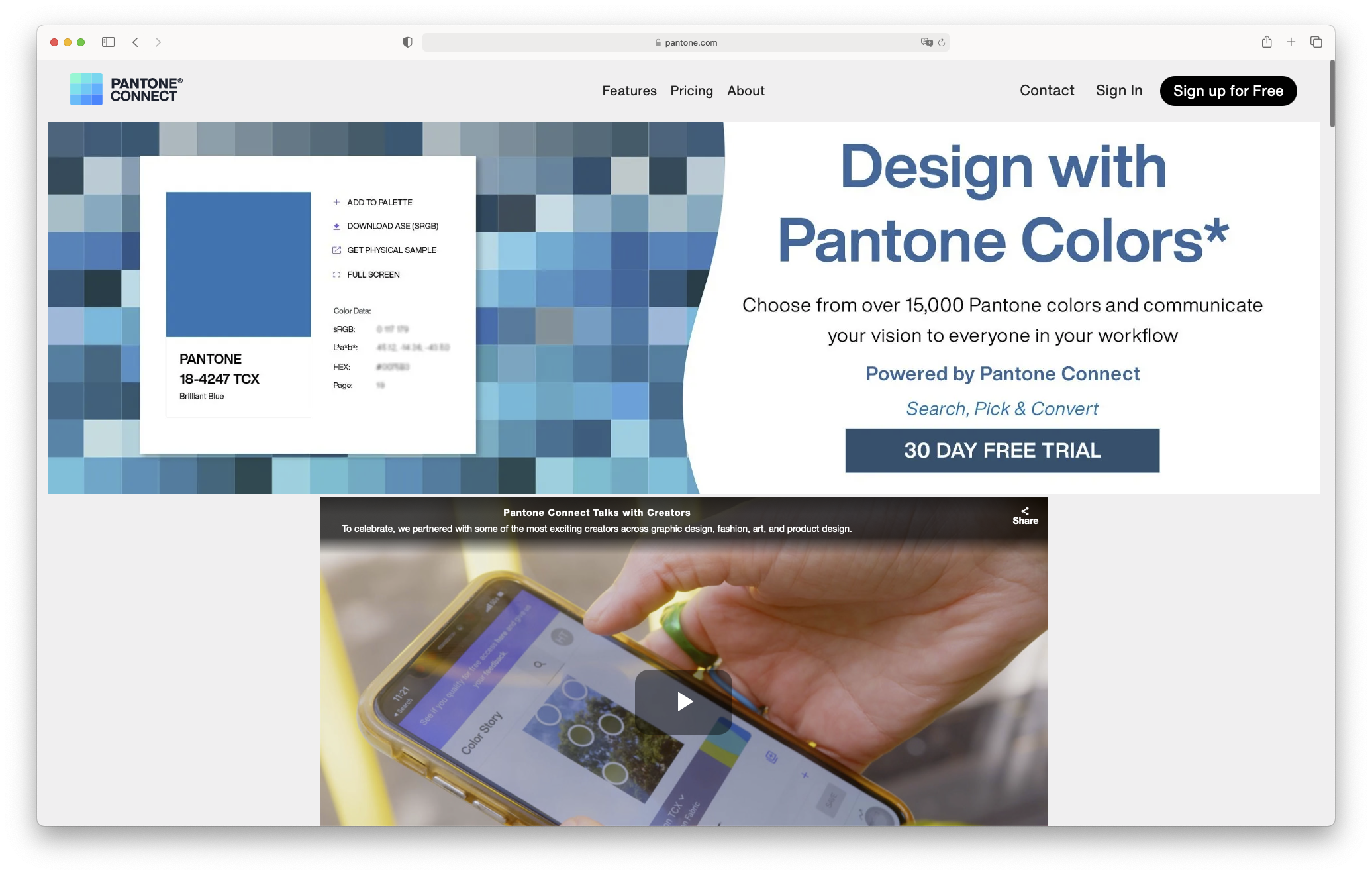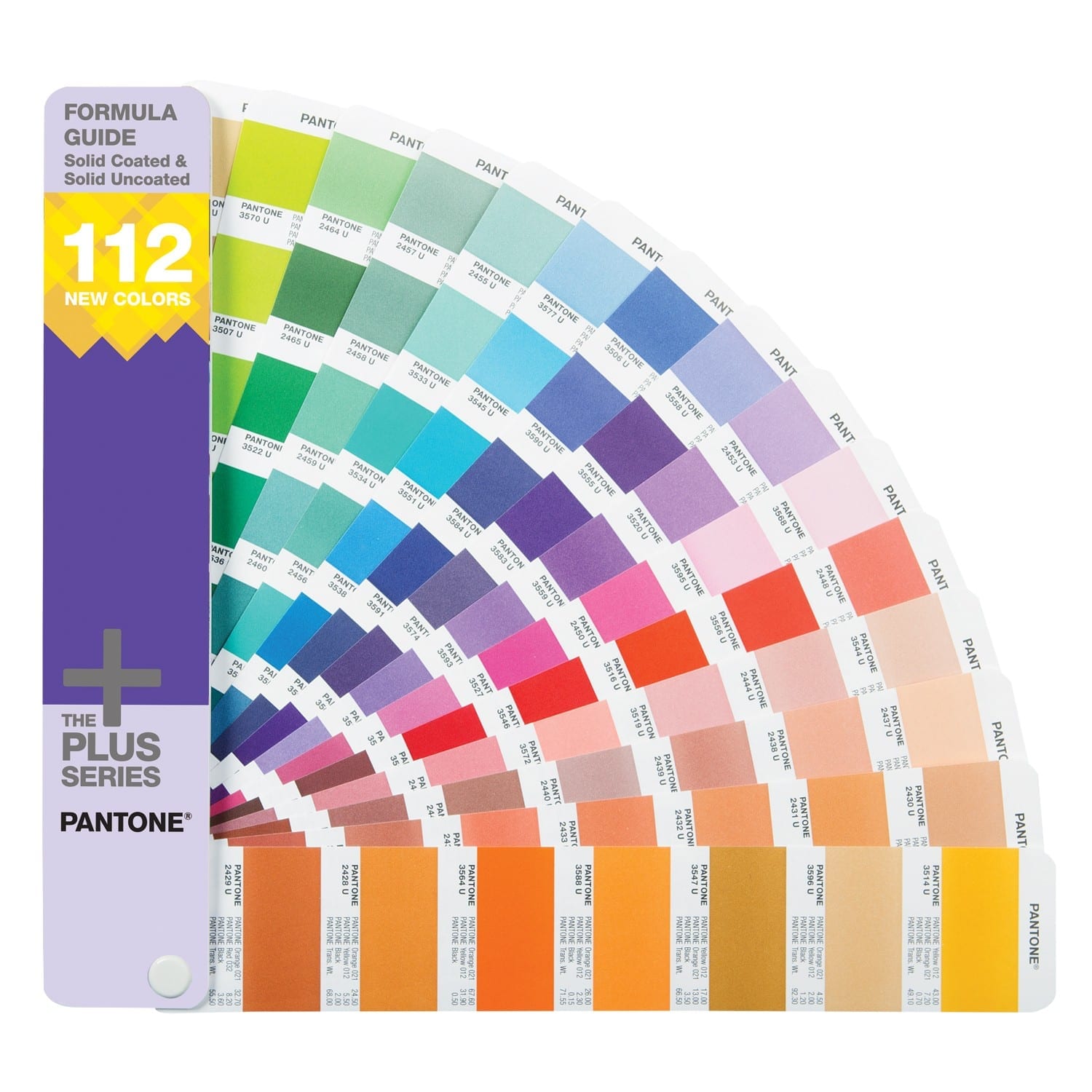This year we have again submitted proofs for Fogra certification. We thus prove that we not only deliver excellent proof quality through internal quality controls and checks, but that the quality of our proofs is also confirmed by an external body. We have therefore had proof prints certified for the seventh year in a row.
Precise proofing of tonal values of spot colours
In recent weeks, there have been lengthy discussions on the Fogra digital printing mailing list as to whether a research project should be launched to define standardised tonal value gradations for spot colours. What is this all about? In the field of CMYK and seven-colour printing, the definition of clear, printable and proofable standards is well established and has been tried and tested in practice. If the paper or paper class is known and defined, a measuring standard such as M0/M1/M2 has been established and the content of optical brighteners …

